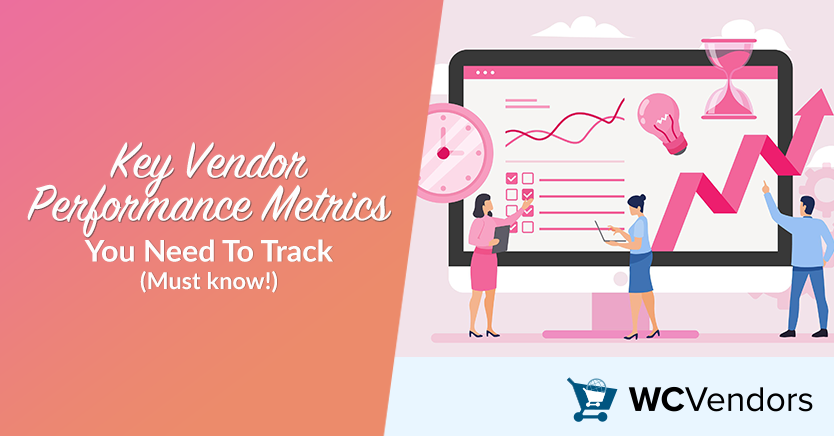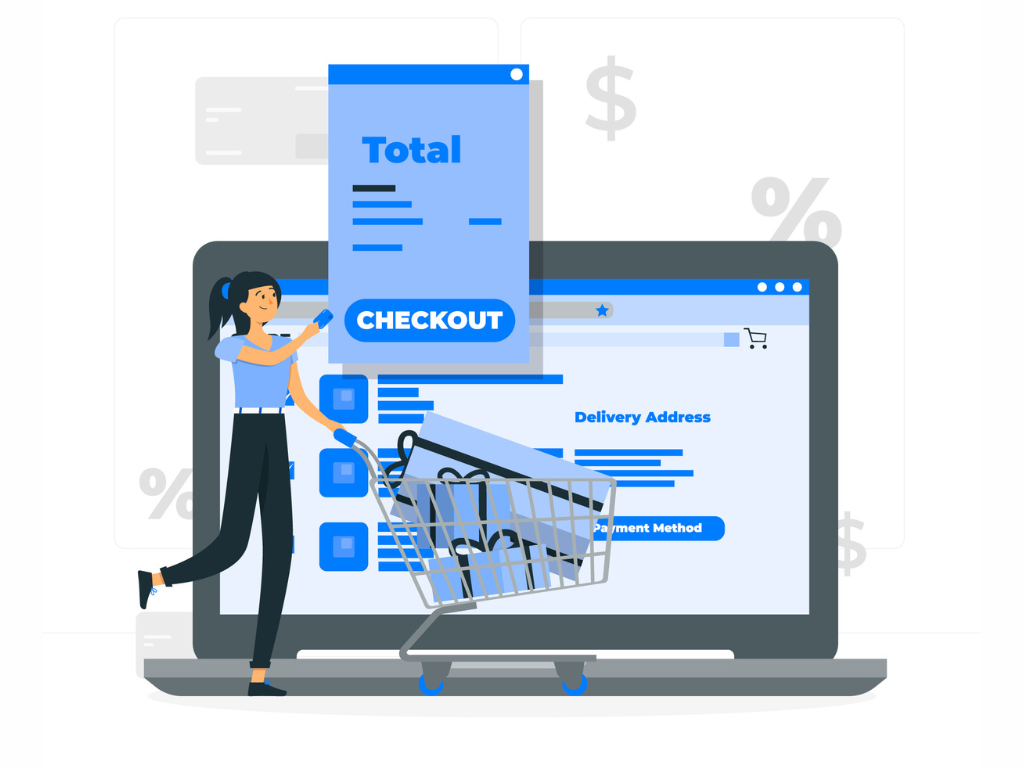
Are you keeping an eye on the important vendor performance metrics that help your multi-vendor marketplace succeed? Knowing how well each vendor is doing is not just useful — it’s essential. It helps keep everything running smoothly and ensures your customers are happy with their experience.
By focusing on the right metrics, you can measure vendor efficiency, enhance customer satisfaction, and drive overall business growth. In this article, we will explore the key performance metrics you need to track to ensure your marketplace thrives.
So, let’s get started!
What Is A Vendor KPI?
A Vendor Key Performance Indicator (KPI) is a measurable value. It highlights how well a vendor meets key business goals in your marketplace. These KPIs focus on critical areas like delivery speed, product quality, customer service, and cost efficiency.
Transitioning to monitoring, these metrics allow you to pinpoint improvement areas. Additionally, you can hold vendors accountable. Overall, this process helps in fostering stronger partnerships.
Why do vendor KPIs matter?
Vendor KPIs are crucial for transparent performance assessments. Initially, they establish clear expectations, setting a standard for vendor evaluation. Being clear is key to working well with vendors. It helps make sure that marketplace owners and vendors are working towards the same aims.
When performance measures are clear and everyone knows them, problems are less likely. Additionally, there are fewer mix-ups and a smaller chance of vendors not meeting standards.
For example, imagine a marketplace owner tracking delivery times. A vendor consistently misses delivery windows, negatively impacting customer satisfaction. Using KPIs that track how fast items are delivered, the owner can point out any problems. They can then talk about ways to get better or think about changing the vendor’s agreement. This way, everyone knows what is expected, and you can see clearly how well the vendor is doing, which makes it easier to make things better.
How Do You Monitor Vendor Performance?

Monitoring vendor performance is an ongoing process that requires collecting and analyzing data. Here are some practical steps to help you track vendor performance metrics:
- Regular reporting: Encourage vendors to provide regular performance reports. These reports should contain sales data. Additionally, they must include information on product returns and delivery times. Furthermore, they should capture customer complaints and other important metrics.
- Customer feedback: Collect customer feedback through surveys, reviews, and ratings. Customer feedback offers insights into a vendor’s performance. This includes aspects like product quality. Additionally, it covers the delivery experience. Moreover, it encompasses customer service.
- Automated tools: Use automated tools to track vendor performance. WordPress plugins like WC Vendors Pro provide features to monitor sales data. Additionally, they allow monitoring of order status and customer feedback. Furthermore, they track other essential metrics. This makes it simpler to watch vendor activities in real time.
- Performance scorecards: Create performance scorecards for vendors that highlight key metrics. This makes it easier to identify top-performing vendors and those who need to improve.
Engage with your vendors by discussing performance reports and offering suggestions for improvement. Regular communication ensures that both parties are aware of any challenges and can work together to find solutions.
Now that we’ve seen how to monitor vendor activities and gather data, the next step is to analyze this information for effective vendor performance evaluation. How do we discern which vendors are elevating our marketplace and which may need changes? Let’s explore evaluation techniques to enhance productivity and vendor relations!
How Do You Evaluate Vendor Performance?
Assessing how well a vendor is doing means looking at the data collected and seeing how it matches up with the goals you set. Here are some key steps to effectively evaluate vendor performance:

- Set clear expectations: Make sure all vendors know the KPIs. They should also be aware of the performance standards expected of them. Make these expectations a part of the vendor contract to avoid any ambiguity.
- Analyze performance data: Review the data gathered from different places, such as sales reports, customer feedback, and delivery records. Then, match it against the established KPIs. This helps identify vendors who are meeting expectations and those who are falling short.
- Conduct regular reviews: Organize regular performance review meetings with vendors. Discuss any gaps, share insights, and provide actionable feedback. These meetings are an excellent opportunity to reinforce goals and work on process improvements.
- Benchmark performance: Compare vendor performance against industry standards or competitors. This provides context for understanding if a vendor’s performance is average, above average, or below expectations.
Vendor management KPI best practices
Establishing effective vendor management practices is crucial for any marketplace owner. Here are some best practices to consider:
- Transparency: Ensure that all KPIs and expectations are transparent and communicated clearly to vendors. This fosters trust and helps vendors understand exactly what is required of them.
- Consistency: Use consistent metrics across all vendors to maintain fairness. Consistent evaluation criteria help you make objective decisions regarding vendor performance.
- Continuous improvement: Motivate vendors to keep getting better by setting higher goals. Also, acknowledge their successes. Providing regular feedback helps vendors stay on track and improve over time.
- Collaboration: Treat vendors as partners. Work collaboratively to resolve issues and find mutually beneficial solutions. Engaging vendors in open dialogue helps build stronger relationships and promotes better performance.
We’ve looked at evaluating vendor performance and the best practices for Vendor KPIs. Now, let’s put what we’ve learned into action. It’s time to create your own Vendor Management KPIs. Read on further!
Establishing Vendor Management KPIs
Vendor performance is usually measured using a set of agreed-upon Key Performance Indicators (KPIs) tailored to your marketplace’s needs. These KPIs help set clear expectations and ensure both you and your vendors are aligned.
Here are some common KPIs to consider for your multi-vendor marketplace:
| KPI Type | Marketplace Products | Marketplace Services |
| Quality | Rate of product defects, returns, packaging issues | Timely resolution of customer queries, service errors |
| Delivery | On-time delivery rate, shipping accuracy, damage rate | Service uptime, response times, timely completion of support requests |
| Innovation | Introduction of new or improved products, competitive pricing | Suggestions for service enhancements, process improvements |
| Risk Management | Vendor adherence to marketplace policies, product safety standards | Data security compliance, handling of sensitive information |
| Cost Control | Consistency in pricing, competitive offers | Reasonable service fees, avoidance of hidden costs |
| Customer Service | Customer ratings and reviews, handling of complaints, communication clarity | Customer support satisfaction, efficient dispute resolution |
By defining these performance metrics clearly, you can create a transparent and fair evaluation process, helping both you and your vendors work towards shared success.
We’ve got your Vendor Management KPIs ready. Next, let’s use what we’ve learned to make the checkout process better with vendor performance metrics. Want to make checkout smoother?
Let’s see how these metrics can help!
Enhancing The Checkout Process Through Vendor Performance Metrics
One of the critical areas where vendor performance metrics can make a big difference is in the checkout process. Here’s how tracking these metrics can help:

1. Monitoring delivery accuracy
Monitor delivery accuracy, including on-time arrivals and fewer lost packages. Thus, customers get their orders as anticipated. This leads to increased customer satisfaction and reduced cart abandonment rates.
2. Quality control measures
Keep an eye on how often products are returned and why. This helps you spot vendors with quality issues. Then, use this information to put quality checks in place. This will make the products on your marketplace better.
3. Customer service excellence
Keep track of how quickly customer service answers questions, deals with complaints, and what customers think of the service. This makes sure customers get the help they need when they buy something and afterwards. High standards in customer service lead to repeat purchases and positive word-of-mouth.
Now that we know vendor metrics improve checkout, we need tools to track them. WC Vendors is just the tool for the job. Curious about how it works? Follow along to see how it helps you monitor vendors easily. Let’s find out more!
How WC Vendors Helps You Track Vendor Performance Metrics
WC Vendors provides powerful tools to help you track and manage vendor performance metrics with ease. From automated reporting features to performance dashboards, WC Vendors allows marketplace owners to stay informed and proactive.
The platform integrates key performance indicators like sales volume, order status, delivery times, and customer reviews into a single interface, making it easier to monitor vendor activities and make data-driven decisions.

Key Features of WC Vendors for vendor performance tracking
- Pro dashboard for vendors: Marketplace owners can instantly see sales as they happen using the Pro Dashboard. This aids in monitoring sales activity and vendor performance as it occurs.
- Order management: WC Vendors offers detailed tracking for order status. Additionally, it ensures vendors deliver orders on time.
- Vendor feedback system: Leverage integrated customer ratings and reviews to evaluate vendor performance. This feedback system provides valuable insights into product quality and vendor service levels.
- Powerful vendor reports: Generate detailed automated reports with WC Vendors. Then, use these to analyze and discuss vendor performance. Regular reporting enables marketplace owners to make informed decisions and maintain high standards.
By using these features, you can keep your marketplace running well. This ensures vendors are responsible, and customers are happy.
Conclusion
Knowing the right vendor performance metrics is crucial for marketplace owners. These metrics ensure smooth operations, satisfied customers, and growth. By monitoring these metrics closely, you can pinpoint improvement areas. Additionally, they help maintain high standards and build strong vendor relationships.
To fine-tune your marketplace’s approach to vendor management, these are the essentials to remember:
- Understanding Vendor KPIs
- Monitoring Vendor Performance
- Best Practices in Vendor Management KPIs
- Establishing Effective Vendor KPIs
- Enhancing the Checkout Process
- Leveraging WC Vendors
By focusing on these critical areas, you’re doing more than just managing vendor performance. You’re also enhancing the operational quality and customer satisfaction of your marketplace. This proactive approach lays a solid foundation for success. It ensures you stay ahead in a competitive field.
If you need more information or assistance, we’re here to support you at every phase of your journey!
